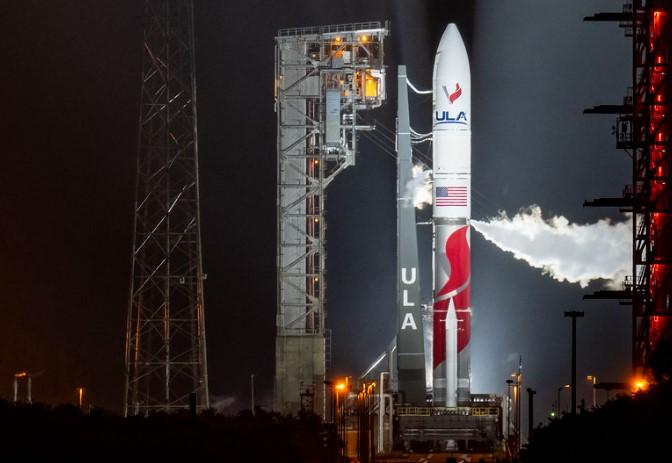
ULA on Oct. 1 conducted a wet dress rehearsal for the Vulcan-Centaur Cert-2 mission.
United Launch Alliance (ULA) is preparing for the second flight of its new Vulcan-Centaur rocket, a demonstration mission needed to complete certification ahead of service for the U.S. military.
ULA had hoped the mission, known as Certification-2 (Cert-2) would double to send Sierra Space’s Dream Chaser spaceplane on its way to the International Space Station (ISS) for a resupply run for NASA. But the vehicle would not have been ready in time for ULA to complete Vulcan certification in time for a higher priority national security space mission later this year.
Instead, the Vulcan-Centaur will carry a non-deployable 3,366-lb. simulator originally built in case the customer for the booster’s debut flight in January would not be ready in time. That mission, known as Cert-1, lifted off on Jan. 8 with Astrobotic’s Peregrine lunar lander.
ULA completed a wet dress rehearsal for Cert-2 on Oct. 1 and is aiming to launch between 6-9 a.m. EDT Oct. 4 from Cape Canaveral SFS Space Launch Complex-41. Oct. 4 marks the 67th anniversary of the launch of the Soviet Union’s Sputnik satellite, the dawn of the Space Age.
Vulcan’s launch preparations come as SpaceX stands down from Falcon rocket launches while it investigates an anomaly with an upper stage engine burn following the successful Sept. 28 launch of a Crew Dragon spacecraft bound for the ISS. Among those hoping for a speedy resolution are the European Space Agency (ESA), which is aiming to launch its Hera asteroid probe on a Falcon 9 on Oct. 7, and NASA, which hired SpaceX for a Falcon Heavy ride for its Europa Clipper spacecraft during a launch window that opens Oct. 10.
The Crew Dragon, carrying NASA astronaut Nick Hague and Russian cosmonaut Aleksandr Gorbunov, docked at the station on Sept. 29. The men will join station commander Sunita Williams and flight engineer Barry “Butch” Wilmore—the two astronauts transferred from the June 5-Sept. 6 Boeing CST-100 Starliner flight test—for a six-month increment. They replace the SpaceX Crew-8 crew of Matthew Dominick, Michael Barratt, Jeanette Epps and cosmonaut Alexander Grebenkin, who are due to return to Earth around Oct. 7. Also aboard the ISS is the recently arrived Soyuz MS-26 crew of cosmonauts Aleksey Ovchinin and Ivan Vagner and NASA’s Don Pettit.





